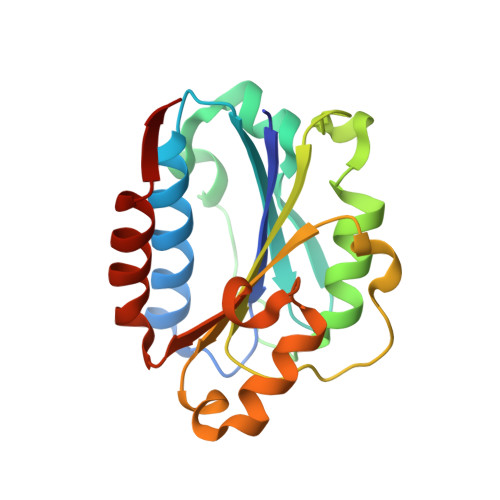Improved lymphocyte function-associated antigen-1 (LFA-1) inhibition by statin derivatives: molecular basis determined by x-ray analysis and monitoring of LFA-1 conformational changes in vitro and ex vivo
Weitz-Schmidt, G., Welzenbach, K., Dawson, J., Kallen, J.(2004) J Biol Chem 279: 46764-46771
- PubMed: 15304496
- DOI: https://doi.org/10.1074/jbc.M407951200
- Primary Citation of Related Structures:
1XDD, 1XDG - PubMed Abstract:
The integrin lymphocyte function-associated antigen-1 (LFA-1) (alphaLbeta2; CD11a/CD18) plays an important role in leukocyte migration and T cell activation. LFA-1 is inhibited by the cholesterol-lowering drug lovastatin, which binds to an allosteric site of the alphaL I domain termed the lovastatin site (L-site). Here we report for the first time the x-ray structures of the LFA-1 I domain complexed with derivatives of lovastatin optimized for LFA-1 inhibition. This analysis identified two new subpockets within the L-site occupied by chemical groups of the statin derivatives but not by lovastatin itself. Occupancy of these L-site subpockets led to distinct conformational changes in LFA-1, which were detectable by an epitope-monitoring assay. We utilized this assay to demonstrate improved LFA-1 inhibition in human blood in vitro and in blood samples from treated animals ex vivo. Moreover, we demonstrate that the novel lovastatin-derived LFA-1 inhibitor LFA878 exhibits potent anti-inflammatory effects in carrageenan-induced rat paw edema. In summary, the findings reported here extend the understanding of LFA-1 inhibition at the molecular level, allow for the identification and design of LFA-1 inhibitors of further enhanced potency, and support the expectation that LFA-1 inhibitors binding to the L-site will be of therapeutic value in treating inflammatory diseases.
Organizational Affiliation:
Novartis Institutes for BioMedical Research, CH-4002 Basel, Switzerland.
















